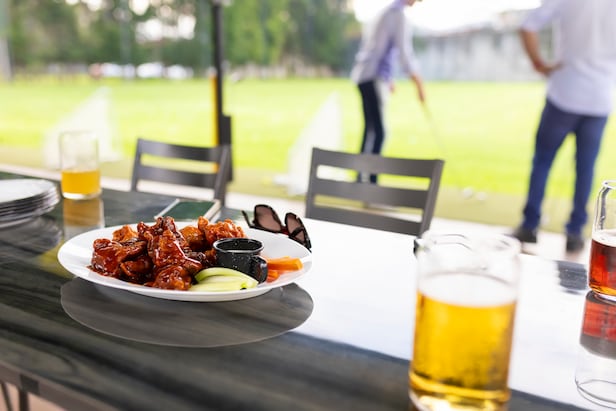Regional Golf: Get Out Of Town! – Australian Golf Digest

- by Admin
- August 28, 2024
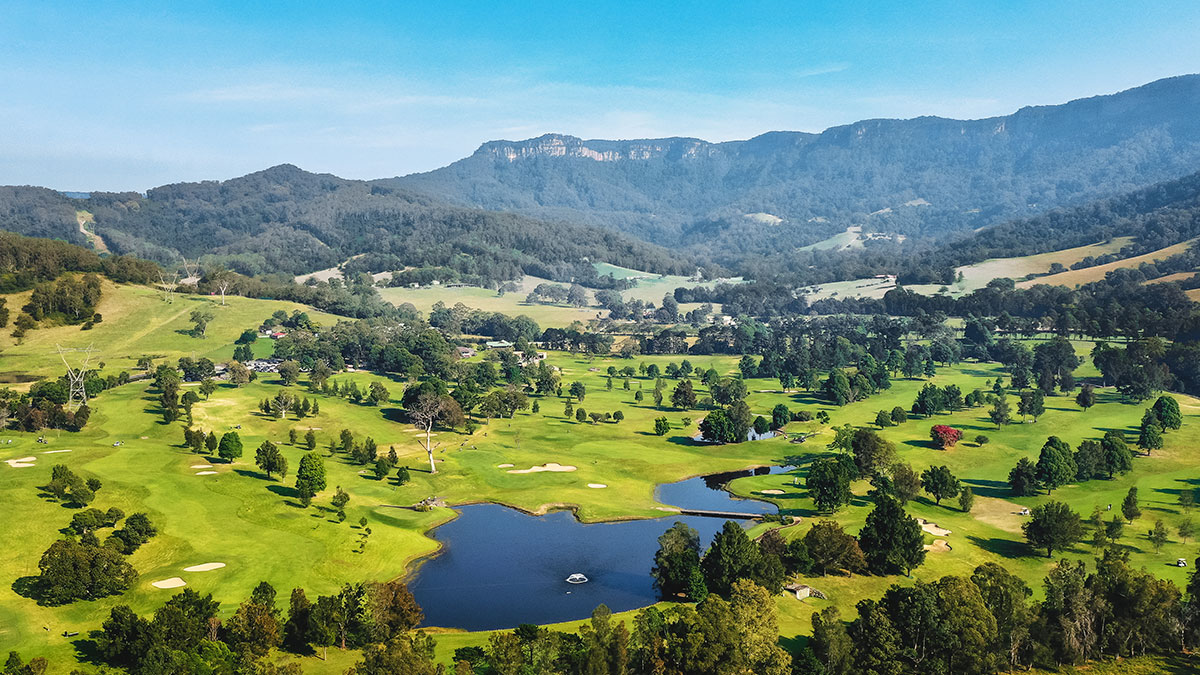
Golf in regional areas is at the core of the game in Australia. Here are a few of our favourite non-suburban destinations.
Arguably the greatest asset Australia has is space. Freedom to move, room to roam and some of the widest expanses of relative nothing on the planet. We’re blessed to be part of a small population in a country with ample territory.
The benefit of that in golf is a swath of rural courses in a wide variety of settings and locations. In our most recent ranking of Australia’s Top 100 Golf Courses, nearly half are in non-metropolitan areas. So, as much as we laud the Melbourne Sandbelt, Sydney’s coastal gems and the ‘Royal’ courses in every city, the fact is just as many of our best golf courses aren’t in suburbia.
Just finding those non-urban layouts is half the fun, too. To reach them all, you’d need to venture to remote Kalgoorlie and Albany in the west, King Island in Bass Strait, up and down multiple coasts, into several prominent wine regions and all manner of places in between. And that’s just the ones ranked in the Top 100; broaden your sights and many of the next tier of courses are also in regional areas. This ‘shared wealth’ is a good thing in numerous ways.
“Regional golf is thriving in a participation space,” says Mark Ingrey, the senior regional manager for Golf NSW. “Where it used to be treading water, now there’s much better use of facilities at country golf clubs, be it for golf or non-golf activities.”
In his experiences dealing with regional clubs and from his own observations, Ingrey says the golf boom that city clubs have felt has trickled down to rural clubs.
“They see the golf club as a community asset,” he says. “It’s slightly more diverse compared to metropolitan clubs, but the interest in golf is a lot higher in country areas. A lot of venues are seeing more demand – for golf and golf carts. We all know golf is ‘cool again’, but that’s filtered down to country areas as well.”
So, what makes regional golf different? “There’s a personal approach,” Ingrey says. “Country golf clubs can feel more relaxed, more personable. Many of the members are volunteers at their club because they have a deep connection with it. There’s an ambience and a vibe to country golf clubs – not that it isn’t the case at metropolitan clubs – that’s just totally different. I always use the example that for a significant golf event, often the women members at country courses will put on scones and tea and take other steps to make a big deal of the golf. You don’t often see that at city clubs.”
No, you don’t, which is why regional golf feels different in that wonderfully warm and fuzzy way. With that in mind, here are a few of our favourite road-trip destinations. – Steve Keipert
New South Wales
With such variety to its many regions – tropical, outback, alpine, rural, coastal – our most populous state feels like a hundred places in one. The golf courses of New South Wales highlight the range, too, including this collection.
On the North Coast, Ocean Shores Country Club owns an instantly recognisable point of difference thanks to its six par 3s, six par 4s and six par 5s – and no holes with the same par played consecutively. But there’s much more to the layout than a quirky scorecard alone. Designed by Bruce Devlin and Robert von Hagge in the late 1960s and more recently updated by Richard Chamberlain, Ocean Shores has long been considered one of the best courses in the region.
Venturing south down the coast, is there a more visually serene, non-oceanside course than Bonville Golf Resort? The beacon of North Coast golf has always been popular, but today it is hellbent on satisfying golfers more than ever [see page 120].
Moving inland, the central town of Orange is home to a pair of fine courses in Duntryleague and Wentworth Golf Club. The region alone is well worth visiting but when you partner the tourist attractions with multiple golf courses, it quickly evolves into a place to plot an extended weekend around rather than a mere stopover. Wentworth has never looked better after its amalgamation with Orange Ex-Services Club in 2019 injected a new seam of funding into the layout. And upgraded irrigation system, renovation of greens, tees and fairways and more to come have Wentworth as one of the real momentum clubs in country NSW.
As you move back towards the coast, be sure not to overlook the Hunter Valley triumvirate of Cypress Lakes, The Vintage and Pacific Dunes – three Top 100-ranked layouts with varying terrain and challenges, the first two located just minutes apart. Then on the outskirts of Sydney but far enough away from it to feel detached, the golf course at The Springs is benched into a hillside overlooking Dharug National Park with views that accentuate the sense of escapism. Design-wise, the layout is the union of the late Al Howard (the first 11 holes) and Graham Papworth (the last seven), the pair utilising the undulating land and bushland setting to pen a highly pleasant course.
South of the ‘big smoke’, Calderwood Valley Golf Course in the shadows of the Illawarra Escarpment offers one of regional Australia’s prettiest layouts with its creeks, garden beds, bridges and pergolas. With no members, competition rounds or clubhouse, Calderwood is marketed as the Illawarra’s only exclusively public golf course. Since opening in 1995 it’s acquired a devoted following among locals with a mission statement “to ensure Calderwood Valley Golf Course is an enjoyable and affordable place to play golf and socialise”.

Further south, the collection of courses dotted from the gorgeous seaside town of Mollymook to the Victorian border covers several of the state’s most appealing regional courses. The twin-course Mollymook Golf Club is a place on the rise. It began with a successful, million-dollar redesign of the club’s nine-hole Beachside course, which reopened in 2022 as a reinvigorated, 1,200-metre, par-28 layout. Next up is the Hilltop course, where three holes are being renovated per year under a Justin Trott-penned masterplan.
“The purpose of the plan is to improve the playability and quality of the playing surfaces,” says golf manager Barry West. “The course layout will remain the same with the exception of the ninth hole, which is rerouted away from the proximity of the clubhouse and cart-staging areas.”
The entire South Coast sits in a climate that’s conducive to maintaining healthy greens, but the course that arguably does it best is Moruya Golf Club. Over time, it has forged a reputation for having the best-conditioned putting surfaces in the region. It’s also a layout that’s not easily conquered as several instances of hidden water can be a trap for first-time visitors, with the chain of flowing creeks and ponds coming into play more often than first impressions allow. A signature of the Moruya layout is the enormous double-green for the ninth and 18th holes, providing a vast paddock upon which to strike your final putts.
Who doesn’t love Narooma Golf Club? Part of its allure is the cute seaside town itself, but anyone who plays the golf course yearns to come back and tackle it again, which is what so many golfers do. The coastal site is exposed early and sheltered late, such a contrast in settings giving the John Spencer-designed layout dual appeal. Even golfers who’ve never been to Narooma would be familiar with the famous third hole, the par 3 across a chasm, as well as the second, which is arguably a better hole. Their exceptional location – where misses to the left can literally miss the country – makes for a thrilling start to the round. But the excursion takes a twist after the seventh hole where the course ventures inland to an undulating section that’s part heathland, part bushland.
A fixture in the delightful town of Merimbula, Tura Beach Country Club offers one of the best settings in coastal golf, with a clubhouse perched high upon a rise overlooking the Pacific Ocean. The course sees a lot of the same views as it rises and dips with the flow of the land. It’s a spectacular setting, especially at the right time of day as the sun either sidles up from below the horizon of the Pacific each morning or slinks down in the west at sunset. Little has needed to change with the Peter Thomson/Mike Wolveridge design in recent times, so instead there’s been a renewed focus on course conditioning, which has vastly improved in recent years.
Finally, we could offer a month’s worth of golf options along the Murray River – and you’d love every one of them. Perhaps most central, though, is Rich River Golf Club at Moama. With 36 holes and accommodation among an array of on-site facilities plus sitting near many of its river golf brethren, Rich River has it all. The East course draws most plaudits, yet both layouts are well worth your time. Irrigation and bunker upgrades in recent years – as well as the East course now hosting the NSW Open – have placed Rich River back in the spotlight.

Queensland
You could argue that Queensland is the state that most challenges NSW for landscape diversity, and these three different destinations highlight it.
Whether you consider the Sunshine Coast regional or not, there’s a relaxed vibe to the area that often hints country more than city. Which leads us to class Noosa Springs Golf & Spa Resort among the former. Either way, you’re in for a treat at the now 25-year-old icon of ever-trendy Noosa. The Graham Papworth-designed golf course has remained popular and playable throughout its first quarter century, but these days the members are saying it’s in the best condition they’ve seen it for years. That’s partly down to an upgraded irrigation system that has the playing surfaces in constantly improving condition. After all, you can’t be part of the Noosa scene without looking your absolute best.

Up the coast – and off it – Hamilton Island Golf Course owns one of the most unique and captivating locations for golf anywhere in Australia. The ferry ride to the clubhouse is the first indicator Hamilton Island is not your average golf course. Officially located on Dent Island, across a narrow passage in the Whitsundays from ‘Hammo’, the course requires a brief, scenic and serene nautical journey in order to gain access – adding to the unique flavour of the tropical design. Now 15 years old and among the most audacious layouts in the country, the Thomson Perrett design firm needed to overcome environmental and logistical hurdles before crafting a course that affords golfers near-360-degree views of the Whitsundays from most points.
And if the Whitsundays isn’t remote enough for you, we offer up Mt Isa Golf Club – the only golf course in north-western Queensland with grass greens. Famous for being the town where Greg Norman was born, the golf club was founded 12 years after the Normans left town, but the link remains. The 18-hole layout uses its barren environment to full effect. The past few years have seen a focus on improving the course’s irrigation. All tees, greens and almost all the fairways are now grassed, which is a vast improvement from the days when they were basically dirt and rock.
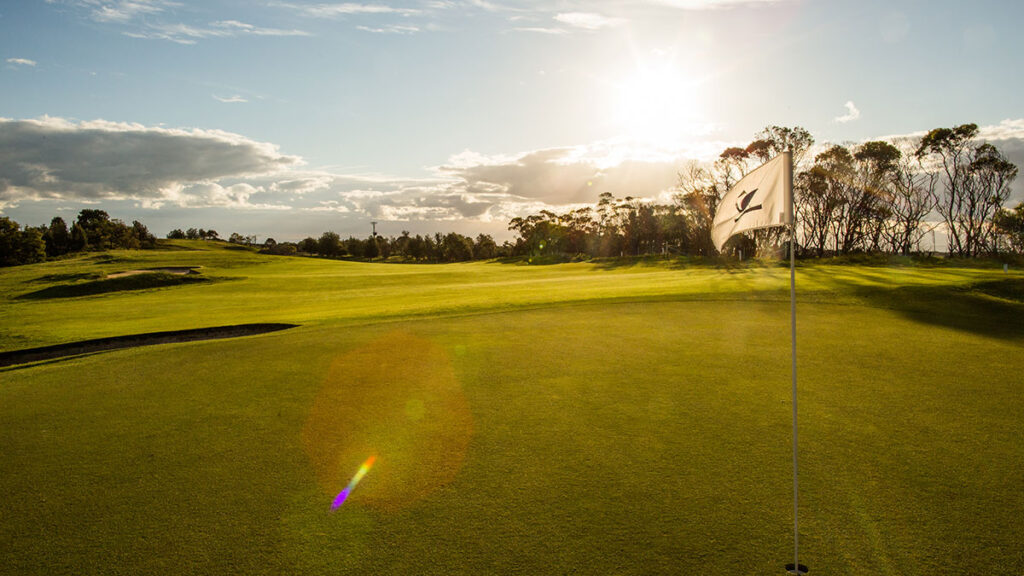
Victoria
The strength of Victorian golf lies in its suburban gems and those courses within arm’s reach of Melbourne. The two peninsulas that cradle the city offer the best regional golf in the state, as does the coastline to the south-west.
On the way to the Mornington Peninsula, don’t bypass sneaky-good Devilbend Golf Club, an impressive and bucolic layout that melds solid design with eye-catching views.
Once on the Mornington, that hotbed of land that looks like it was just meant to be home to an endless stretch of golf courses, two of the best are conjoined at Moonah Links. Peter Thomson’s Open course is golf’s Mensa examination. It might be the most difficult examination in the game before you factor in the wind and weather. Fortunately, playing from the forward markers reduces the difficulty without diluting the layout’s architectural merits. You still have pot bunkers to dodge, and the persnickety greens need to be conquered whether you’re putting for eagle or triple. The adjoining Legends course is fun where the Open is challenging, which isn’t to say there is no fun to be had on the Open course and nor is the Legends a pushover. They’re just two very different tests that are complementary.
Across on the Bellarine Peninsula, there are Sandbelt-esque qualities throughout the layout at Curlewis Golf Club, which has a bushland setting and substantial undulations on the back nine. A club that’s demonstrated more progressive moves than almost any Australian golf club in recent years, Curlewis was once a so-so layout with high potential that sat largely unrealised before morphing into a complete golf destination. Not only did the club renovate the golf course under the architectural direction of Mike Clayton, but it also expanded the total offering by rebuilding the clubhouse to include a spike bar and restaurant, added modern accommodation for up to 126 people and unveiled a tech-led driving range plus mini-golf. It is now a destination for much more than just playing 18 holes.
Along the mesmerising Victorian coastline lies Port Fairy Golf Links, a throwback course with a cult following. Surely no golfer has ever made the journey there and walked away disappointed with the voyage or unimpressed by what they found upon arrival. Port Fairy is an ornament to the best aspects of playing golf along a volatile coast. A throwback course in so many ways, it challenges golfers through its exposed location where the wind can blow off your cap, and via a short but enchanting seaside layout. The 5,887-metre course punches far harder than its scorecard indicates, blowing many an unsuspecting golfer offline if they cannot manage their game in strong winds.
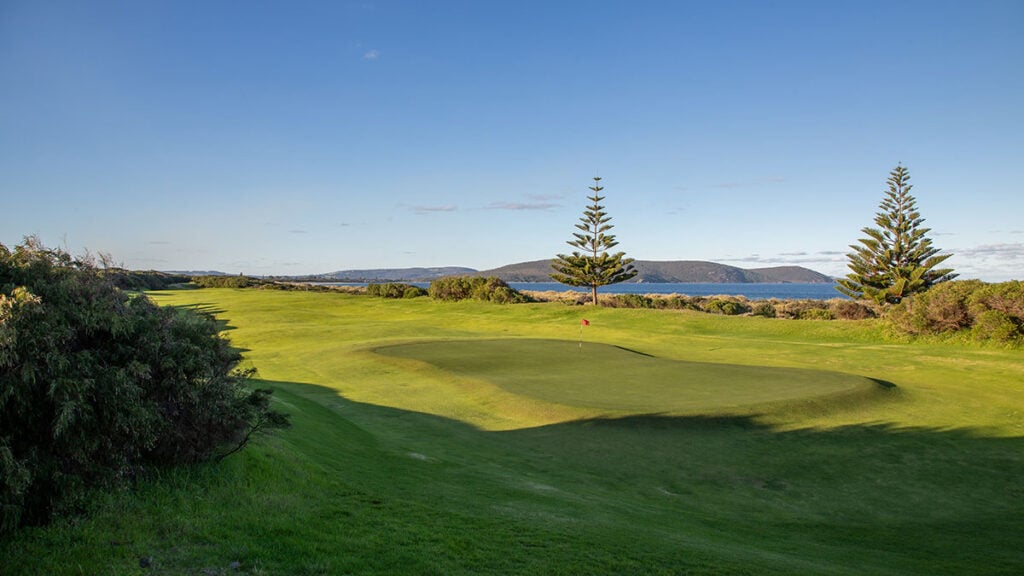
Western Australia
Almost all of WA is regional and there are so many different directions and places we could suggest. But we’ll keep it to two on this occasion – south and south-east of Perth.
Bunbury Golf Club is the pick of the courses south of Perth that’s beyond the area known as the Golf Coast. With undulating land and artistic shapes to its greens and bunkering, the course is a must-play layout. Because if it’s good enough for Seve, it’s good enough for anyone. Yes, the late, great Severiano Ballesteros played Bunbury in a tournament in 1979 along with an armada of other big names of the day. The Spanish maestro would have been right at home on the sand-based, treelined layout, which features gently turning rather than overt doglegs. Some greens welcome running shots while others hide behind gaping front bunkers that dominate the eyeline on approach. Occasionally, there’s more ‘dead ground’ between the bunker and the target – anything to trick the golfer.
A diversion to the east will eventually take you to Albany Golf Club on the state’s capricious southern coastline. The town of the same name is a five-hour drive south-east of Perth but upon arrival at the course it feels like you’ve found the coast of Britain. The linksy course occupies a strip of land on the edge of King George Sound and its firm, fast fairways and oceanside locale make for a charming if occasionally volatile combination. No wonder Craig Parry has long touted it as a favourite course of his.
Albany is a place that’s developed something of a cult following. Golfers from across Australia and around the world would make pilgrimages to the course, recognising the combination of a remote location and an excellent links. “It’s so unique to anything else in not just WA but in Australia. There’s nothing else like it,” says general manager Dan Northcott. “Well-travelled golfers understand what we’ve got here.”
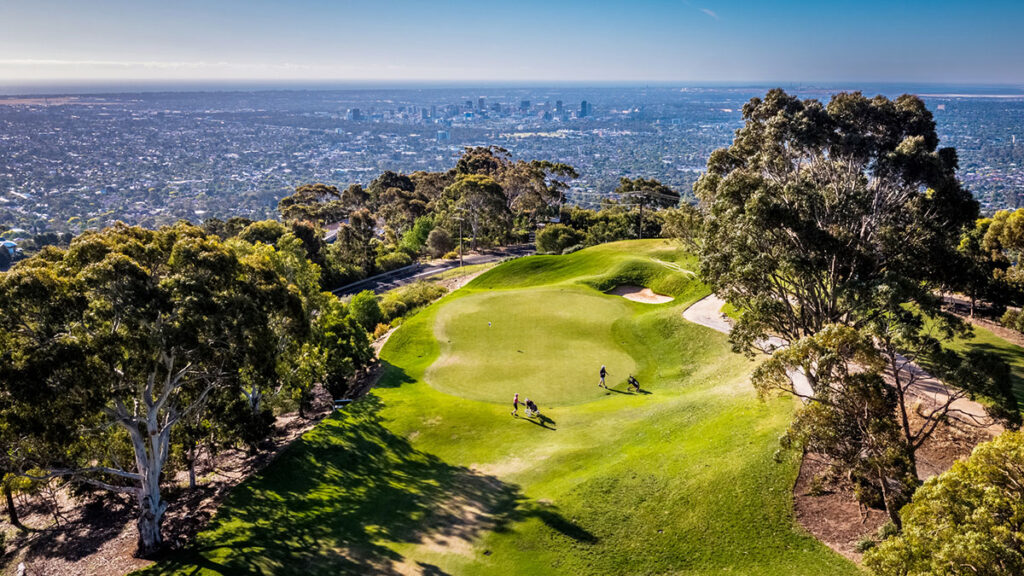
South Australia
Few arms need twisting at the suggestion of venturing outside Adelaide. With world-renowned wine regions in multiple directions, stunning coastlines and plenty of quirky and quaint towns to explore, many of the best bits of South Australia reside away from the city.
In the Barossa Valley, once you’ve had your fill of potent and powerful red wines and playing golf re-renters the equation, there are a handful of worthy options. One neat and tidy layout not far from the vines is Sandy Creek Golf Club. The club changed its name from Gawler Golf Club nine years ago based on geography and to better reflect the broader Barossa region. “We made it a matter of priority to get the change through in order to just bring a bit more clarity around our location, and also really capitalise on the Barossa brand and the Barossa tourist destination,” David Rice, then the club manager, said at the time.
Sandy Creek is a surprisingly good rural layout. The original course was a nine-hole sandscrapes course designed by club member Nolan Kokegei. Early on, sheep grazed on the fairways during winter to keep the grass short. After a few years, the course was gradually extended to 13 holes and eventually became an 18-hole course. In 1972, the club started converting the scrapes to greens and by the end of 1974 all 18 greens were in play. There’s a modest undulation to the land, which is incorporated smartly within the design. You are also forgiven if you become distracted by the views of the Barossa in the distance.
Heading in a different direction out of town, Mount Osmond Golf Club feels like an escape while being conveniently close to Adelaide’s eastern side. Perched high above the city, it offers some of the best views in Australian golf. The ‘Mount’ in Mount Osmond is well earned, with lookout-style views of the city and Gulf St Vincent. However, the course is not just about the scenery. Tight and sloped, it spans 5,567 metres, demanding precision with deep bunkers and challenging fairways. The kikuyu fairways require a keen eye to decipher the slopes, while the greens often break in unexpected ways, making for a memorable round.
Beyond the course, Mount Osmond offers an exceptional after-golf atmosphere. The menu, brimming with local flavours and some of the best South Australian wines, pairs perfectly with the stunning deck views. Members and guests frequently praise the warm hospitality. “At Mount Osmond, we strive to make every visit feel like a homecoming,” says general manager Damian Wrigley.
The experience needn’t end with golf, either. Explore nearby walking trails, enjoy a picnic with breathtaking views or take in the serene surroundings.
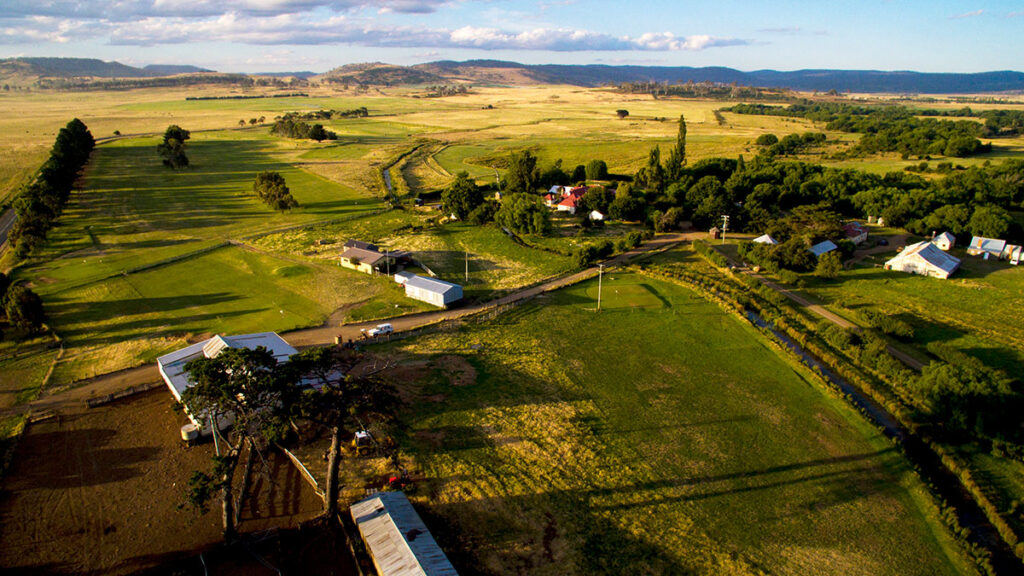
Tasmania
While all of Tasmania feels regional, the truth is our island state’s population spread mirrors many mainland states, with two major centres dominating. Tassie is also home to an underappreciated number of solid nine-hole layouts that are nine simply because that’s what best serves the surrounding population. And a good nine beats a lacklustre 18-holer any day.
However, one of the best regional courses in Tasmania is 18 holes. Ratho Farm, the oldest golf course in Australia, is only an hour’s drive north of Hobart but feels like a journey back in time. Part of a homestead (where you can also dine and stay) and with old farming implements scattered across the course, fences to hit over and gates to pass through, Ratho’s history oozes from
its turf.
While the layout dates back nearly two centuries, several holes are essentially ‘new’, having been restored last decade by course architects Neil Crafter and Paul Mogford. Six holes were lost over time, the first three after the course’s reopening post-World War I, and the others when a new road bridge was constructed in the 1980s across the Clyde River, which runs through the property. Crafter and Mogford turned to old aerial photographs, scorecards, video footage and club members to glean their memories of the layout and bring the ‘lost’ holes back.
Working out which holes are the restored ones and which are the originals is difficult to do, such is the seamlessness of the entire 18. It ultimately doesn’t matter; what does matter is walking off the last green buoyed by a sense of nostalgia – especially if you played using one of Ratho’s hickory sets for that added drop of wistfulness.
The Latest News
-
January 9, 2025‘I’m ready’: Young star sends message to Aussie selectors
-
January 9, 2025Australian captain Pat Cummins in doubt for Champions Trophy as ankle injury revealed
-
January 9, 2025Alex de Minaur faces prickly path as Nick Kyrgios lands ‘kind’ Australian Open draw
-
January 9, 2025Missing Australian hiker found after surviving two weeks on muesli bars and berries
-
January 9, 2025De Minaur handed tricky Aus Open draw, Jones to face former Wimbledon champ



